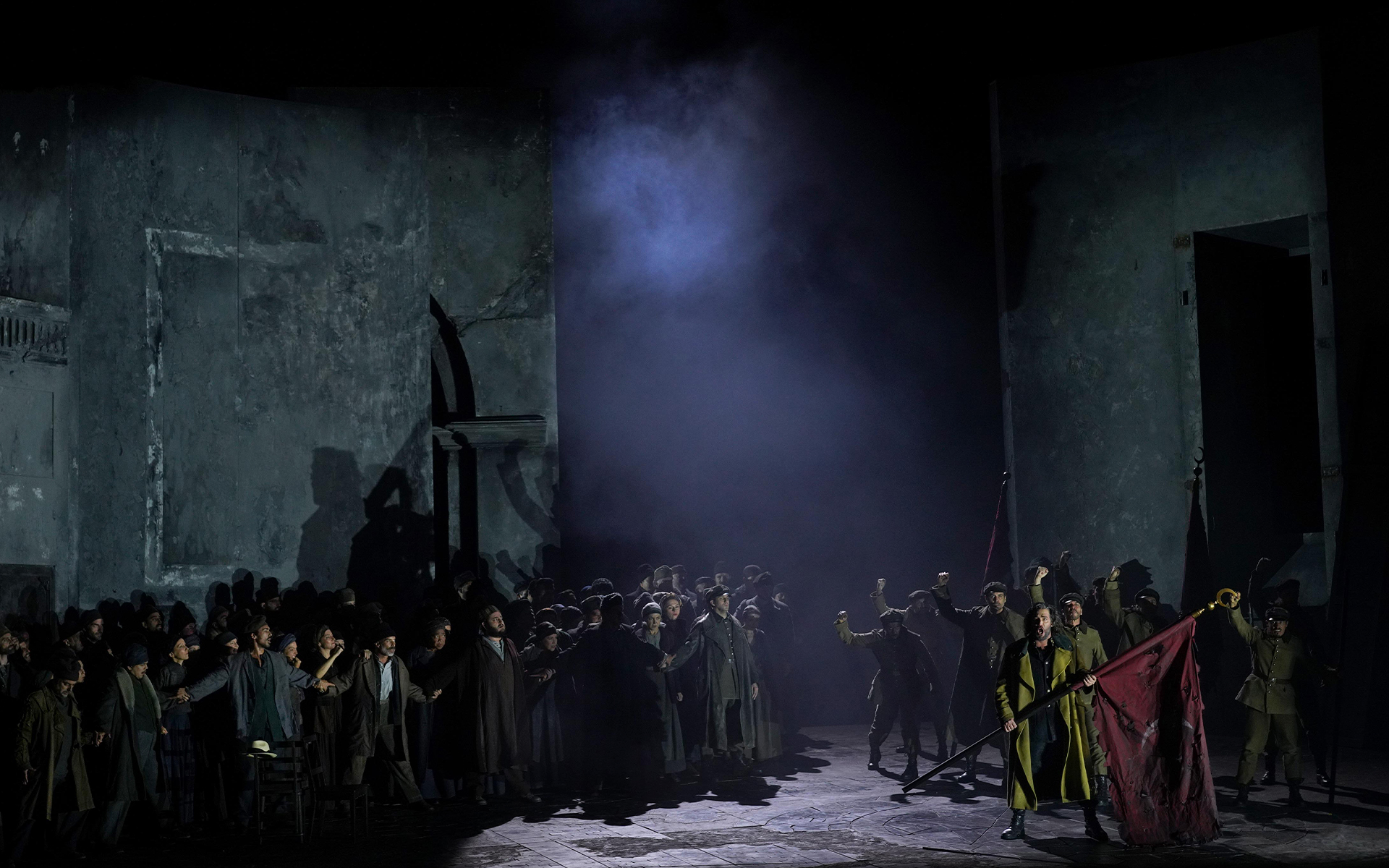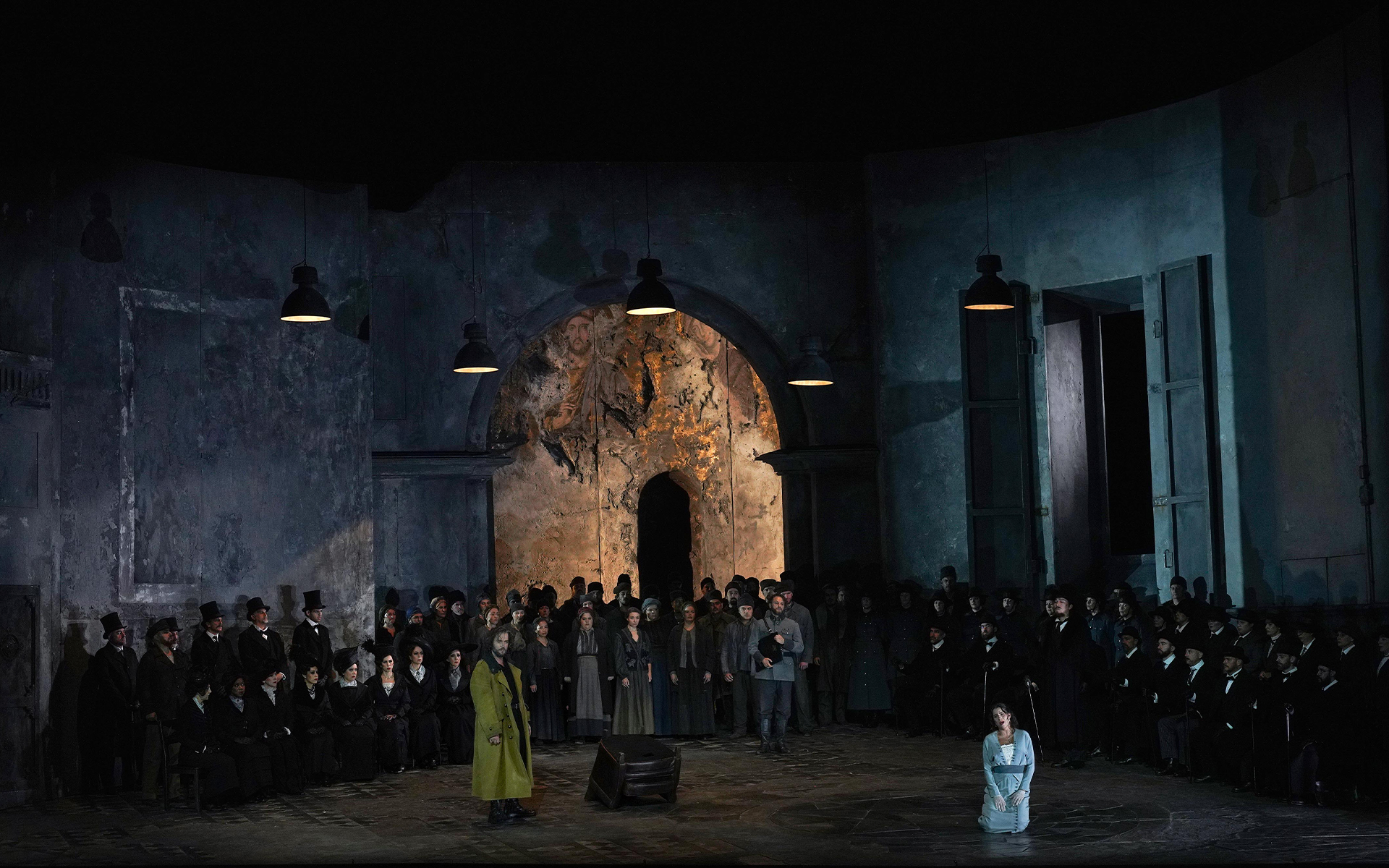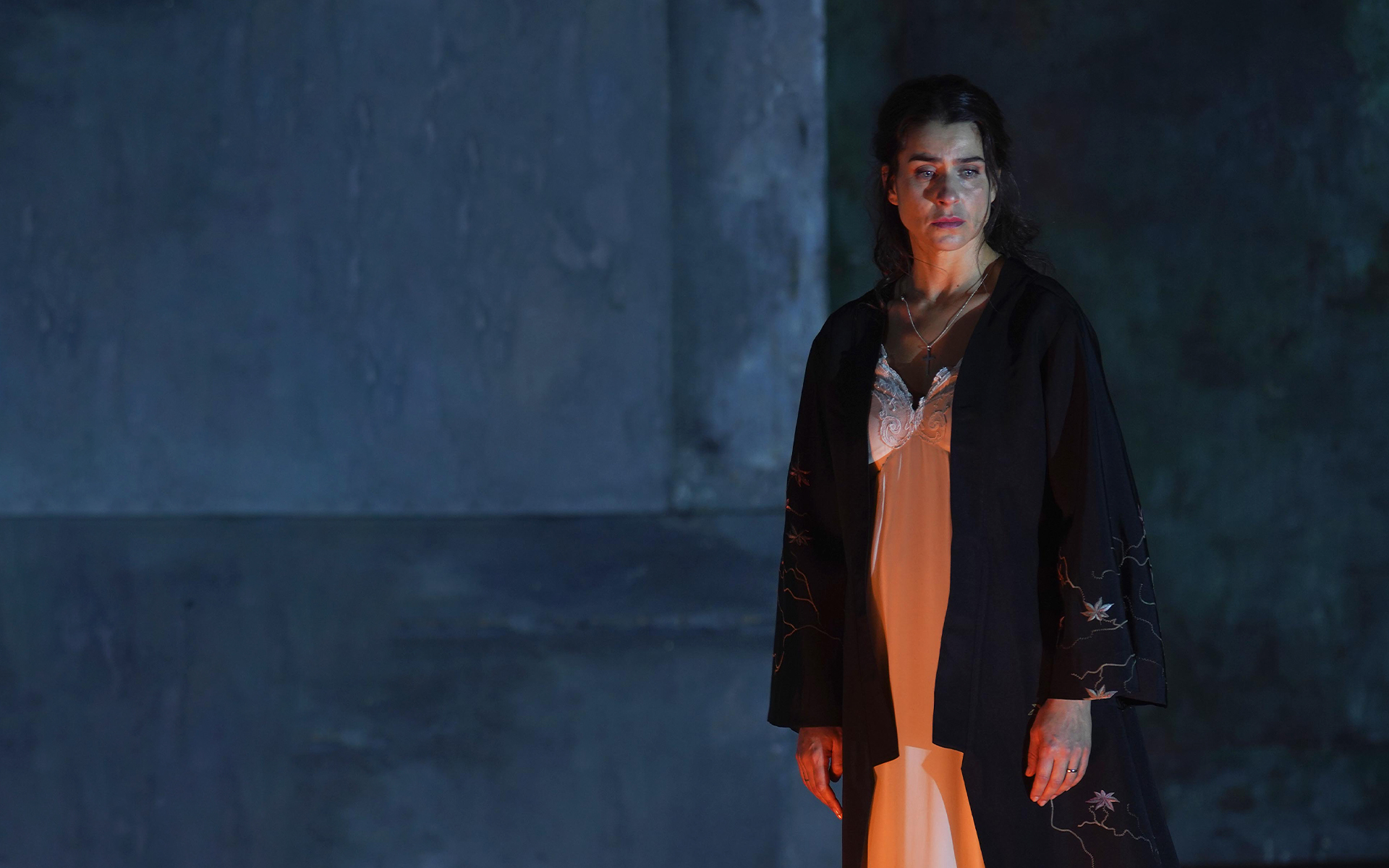Madrid, September 28, 2025.
After completing Aida ( taking a while to convince him to compose it), the great Giuseppe Verdi had intended to retire. He had already composed quite a bit in his youth, during his famous "galley years," and in subsequent decades, during which he had created much of the work for which he is remembered today. However, the Italian genius still had much to say. In 1874, on the occasion of the death of Alessandro Manzoni, he composed his magnificent Requiem. In 1881, he would revise his Simon Boccanegra, which would definitely establish the work in the repertoire. In 1883 and 1886, he revised the Italian version of his Don Carlo. But it was difficult to convince him to compose a new opera. He finally accepted the challenge: this time based on Shakespeare's Othello, as the Bard's plays fascinated Verdi. As early as 1847, he produced a masterpiece, Macbeth. Verdi was fascinated by the character of Iago, and his new creation was initially to bear this name. But it was eventually called Otello. The 1887 world premiere of his Otello at La Scala in Milan was a huge success and became a major title in the operatic repertoire from that moment on.
Shortly after its premiere, it received its Madrid premiere at the Teatro Real in 1890. Shortly after, it was reprised, featuring Francesco Tamagno, the same tenor who premiered this opera at La Scala. Since then, it opera has been performed frequently in Madrid. Plácido Domingo, the last great Otello of the last 40 years, sang it several times in the capital, including once at the now-defunct Vicente Calderón Stadium in the 1980s. After the reopening of the Teatro Real, it was performed in 2000 with José Cura and Renato Bruson, and in 2016, for the last time, with Gregory Kunde, George Petean, and Ermonela Jaho in the first cast, and in the second with Alfred Kim, Lianna Harotounian and Ángel Ódena, the latter two giving amazing performances. Nine years later, it returns with the same staging, directed by David Alden.
Alden's production, which, judging by his productions of Alcina and Lucia di Lammermoor, seems to have a fondness for dilapidated buildings, has very interesting details that make it more enjoyable live than on video. All the action takes place in the enormous and gloomy hall of a ruined palace, intensifying the drama, bringing together all of Iago's scheme and Othello's jealousy in a violent, oppressive, and suffocating atmosphere. The staging may seem overly somber, but it doesn't make the play too difficult to understand, allowing its plot to be followed quite clearly. In a device that seems taken from Elizabethan theater, Iago is present for almost the entire action, a creation of his own; as were Virtue and Vice in some dramas of that period, as supernatural entities that control human actions. Another interesting aspect of the production is the use of shadows, noticeable in different areas of the theater, especially on the right side of the hall. One could see the shadows of Othello and Desdemona in their love duet, or in the second act, the shadow of Iago, sitting near a door, projecting itself gigantically over the shadow of Othello and Cassio, an allegory of his evil superiority. Jon Morell's costumes move the action to an unspecified time in the first half of last century. Adam Silverman's lighting created moments of certain beauty, such as in Othello's monologue "Dio mi potevi," illuminating the Moor with a single light, from the left, as he writhes with jealousy, or the lovers' duet in the first act, as well as the tragic finale, with a somewhat blue light. The hall is dominated by a large door, which opens in the second act to reveal a desert landscape, more appropriate for a sunset on Mars than Cyprus. In the third act, however, it shows a ruined wall, bathed in a beautiful orange light. The production incorporates dancing, especially by a female soloist, but in the second act, the officers perform a laughable dance while offering gifts to Desdemona. Otello kills Desdemona not by strangling her, but by crushing her. In the end, everyone slowly leaves the stage, except for Iago, who witnesses the final tragedy: Otello dying in a corner, unable to approach Desdemona, as the stage gradually darkens.
The music manages to combine Italian tradition with new musical conventions, such as the absence of closed numbers, to avoid applauses and bravos distracting from the plot. Drawing on the composer's innate ability to create atmospheres with his music, the score conveys the atmosphere of intrigue, conflict, and emotion of the main trio. He didn't need to, but Verdi managed to evolve his music to the point of defying his artistic rival, Richard Wagner. In these performances, except for two, the musical director is Nicola Luisotti , so beloved by the audience. Leading the Teatro Real Orchestra , the Italian maestro conducts with his usual force, something also welcome in this spectacular work, although at times a little lyricism could be missed. The strings sounded beautiful in the love duet, and thrilling in moments such as the tremendous tremolo when Otello enters Desdemona's room, after having lifted the audience in the previous aria, as much as the soprano herself. The Real's brass instruments, in their usual powerful line when conducted by this maestro, as well as the English horn and other woodwind instruments in the beautiful introduction to Act 4, shone brightly. The Teatro Real Choir , under the direction of José Luis Basso , sounded spectacular at the beginning of the work, where they sang their most important part, their powerful voices dominating the mighty sound of the orchestra. Their rendition of the fragment " Dio, fulgor della bufera!" was thrilling, as was the later in the lively "Fuoco di Gioia." A high point is at the end of Act 3, when they have to sing "Evviva Otello, Evviva il leon di Venezia" offstage, where they sounded as imposing as ominous. The children's choir, the Pequeños Cantores de la ORCAM, was also featured in Act 2.
Otello is to Verdi what Tristan or Siegfried are to Wagner. A "tenor-killing" role. A role that requires vocal strength and dramatic tone, which tests the tenor who performs it. In the past, tenors were afraid of the role. Some, like Caruso, even if they could have taken it on, didn't dare. Today, it is extremely difficult, if not impossible, to find a suitable tenor to sing it. And those who do, endure pressure and comparisons with tenors of the past who were surely more capable. Otello is a Moor converted to Christianity, so to recreate his dark skin, tenors blackfaced their faces. Today, this is considered racist, so if the singer is white, so does Otello. Back in 2016, this generated some comment in the local music press. In these circumstances, the American tenor Brian Jagde strives to give his best. His voice is powerful, has a pleasing timbre, and his dedication is total. His Otello is that of an overly impulsive young man, and his performance improved as the work was transcurring. The Esultate, with such a difficult range, was a bit difficult for him in the final phrase "dopo l'armi, lo vinse l'uragano." The best moment was in the "Ora e per sempre addio," where his singing achieved a balance between strength and lyric beauty. In the "Dio mi potevi scagliar," he attempted to convey the character's fragility with heartbreaking singing. The final "Niun mi tema" was as moving as his abilities allowed, contributing to convey the aura of tragedy that concludes the work.
Although the tenor is the protagonist of this opera, ironically, the main attraction of this run of performances is to see Asmik Grigorian in the role of Desdemona. One of today's most acclaimed sopranos worldwide, Grigorian is an accomplished singer-actress who has taken on a highly varied repertoire, so far succeeding. In addition to being a capable singer, she is a very beautiful woman with a slender physique. And once again, she has risen to the challenge. Her voice not only has a beautiful dramatic tone, but she is also capable of projecting it well throughout the theater. She is capable of producing beautiful sounds, such as in "te ne rammenti," sweet pianissimos, and even a couple of imposing high notes in the duet with Otello in Act Three. The most anticipated moment of the evening was her grand scene in Act Four, with the two arias together: Piangea cantando, the famous willow song, and Ave Maria. Grigorian, transfigured, transformed into her own character for a moment, gave a lesson in singing and sensitivity (she movingly sings the two words "cantiamo, cantiamo"), emotion (another beautiful high note in "Ah, addio Emilia, addio") and refinement (in Ave Maria, singing with lyricism and conveying the sadness of her character). Finally, that voice of pain says goodbye, singing with a beautiful timbre her last lines " Ingiustamente... uccisa ingiustamente...", before remaining as beautiful as it is rigid... a further example of her stage talents.
Gabriele Viviani gave a generously sized performance to Iago, with a villainous timbre, but a bit flat in conveying the character... his Iago is more of a thug than an intelligent villain. I still remember Ángel Ódena at this same theater and in this same role, becoming the embodiment of absolute evil during the famous Credo. Viviani sings as neatly and correctly as possible, and for example, in the finale of the second act, his volume is comparable to Jagde's Otello, but he doesn't fully convey the nuances of his rich character.
Airam Hernández performed well as Cassio, and veteran mezzo-soprano Enkelejda Shkoza as Emilia still retains a beautiful timbre that is audible. Korean bass In Sung Sim was outstanding as Lodovico, delivering a beautiful bass voice with a wonderful bass line in his brief third-act performance. Albert Casals performed competently as Roderigo and Fernando Radó performed competently as Montano.
The theater was full, and the audience gave a standing ovation to Grigorian, as well as to Jagde and Luisotti. Madrid loves Verdi, and the great Verdi always makes you leave the theater with a smile or completely uplifted, even if the cast has its ups and downs. Otello is such a beautiful, vibrant opera that it's very hard to get bored during the performance, going by in a flash. And specially if it features a great diva in the cast.






No hay comentarios:
Publicar un comentario